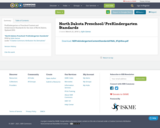
PreKindergarten or Preschool Content and Achievement Standards for the state of North Dakota. Updated 2013.
- Subject:
- Education
- Material Type:
- Primary Source
- Date Added:
- 03/23/2018

PreKindergarten or Preschool Content and Achievement Standards for the state of North Dakota. Updated 2013.
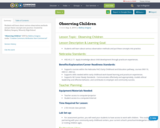
Students will learn about various observation methods and put these concepts into practice.
Created by Mallory Gregory, Waverly High School
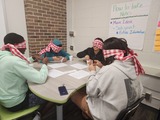
This is the first lesson in the PIESM Development Concepts, Physical Development. In this lesson, there is vocabulary, notes, and two activity stations that require observations. At the end, there is a reflective peice that requires use of student observation and analysis using developmental concepts learned.
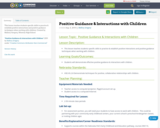
This lesson teaches students specific skills to practice & establish positive interactions and positive guidance techniques when working with children.
Created by Mallory Gregory, Waverly High School
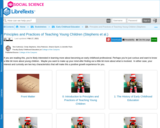
If you are reading this, you’re likely interested in learning more about becoming an early childhood professional. Perhaps you’re just curious and want to know a little bit more about young children. Maybe you want to make up your mind after finding out a little bit more about what is involved. In either case, your interest and curiosity are two key characteristics that will make this a positive growth experience for you.
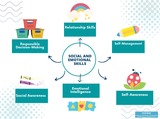
This is a template for an early childhood social/emotional activity plan.
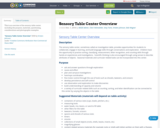
This is an overview of the sensory table center including the purpose, materials, questioning, considerations and photographic examples.

Within this module you will find 30 lessons for various chidlren's literature books, which teach a range of social and emotional skills based within the Texas Prekindergarden Guidelines 2023. Each lesson follows a basic template and has opportunities for 2-5 year old children's participation. This project was made possible by a FREP Grant from Angelo State University
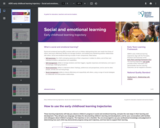
Social and emotional learning involves skills such as children distinguishing their own needs from those of others, learning to effectively identify and manage emotions, and building and maintaining positive relationships with others.
You can use this early childhood learning trajectory to observe children’s progress in social and emotional learning, and to plan the next steps in their learning and development.

Session #1 of 8 AEM Across the Lifespan with OTAP - An Accessible Educational Materials Virtual Mini-Conference (recorded 12.07.23)Presented by Debra FitzgibbonsSession Description: Inclusion of all learners in all Early Childhood environments begins by ensuring equal access to learning activities for all children. Timely provision of accessible options ensures learners with disabilities can access the same information, engage in meaningful participation, and enjoy the same services as non-disabled students, with equivalent ease of use. This session will review common vocabulary, reference relevant state and national legislation related to AEM in the early years and connect the dots by sharing examples of Assistive Technology and Accessible Educational Materials in Early Childhood Environments. It is never too early to help learners explore and discover what works for them.
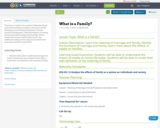
This lesson is meant to be a guide for Nebraska Family and Consumer Sciences teachers who may teach the following courses Human Development, Human Growth & Development, Child Development, Parenting, Interpersonal Relationships, Relationships, Family Living, Teen Living or Daily Living courses. Any additional readings and/or topics not included in the lesson plan should be marked N/A

Nutrition in Early Childhood
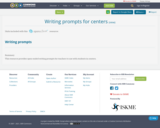
This resource provides open-ended writing prompts for teachers to use with students in centers.